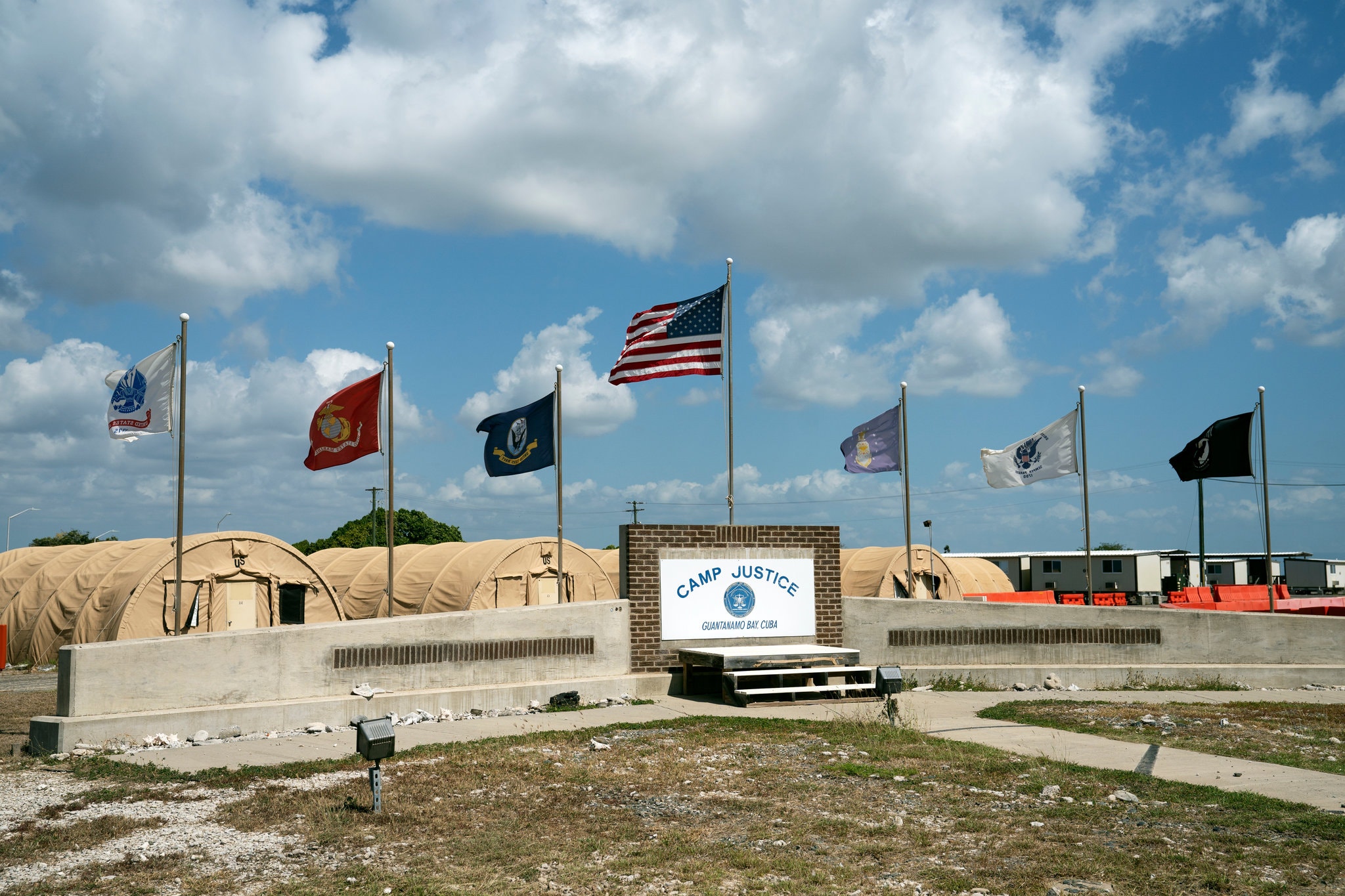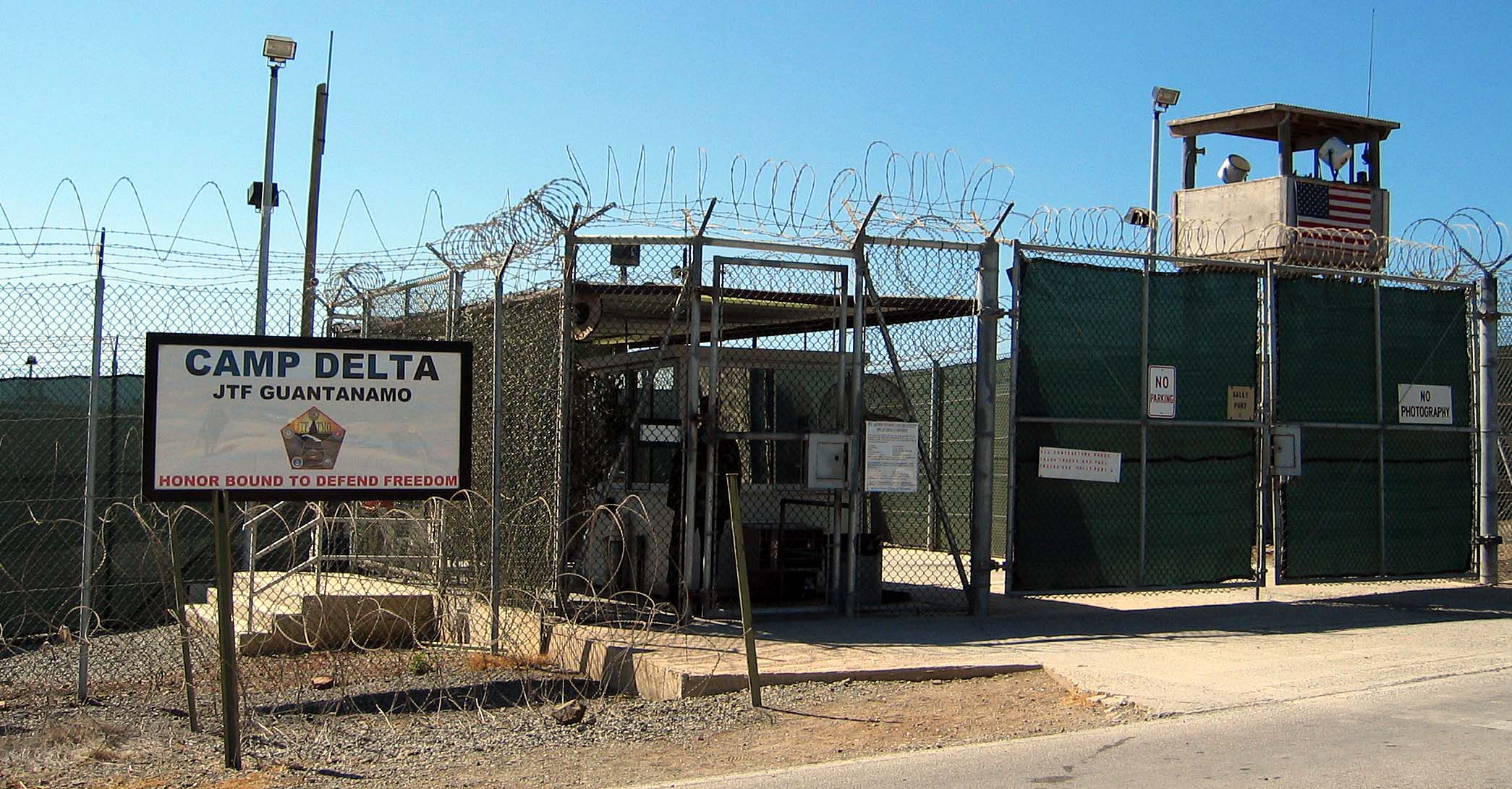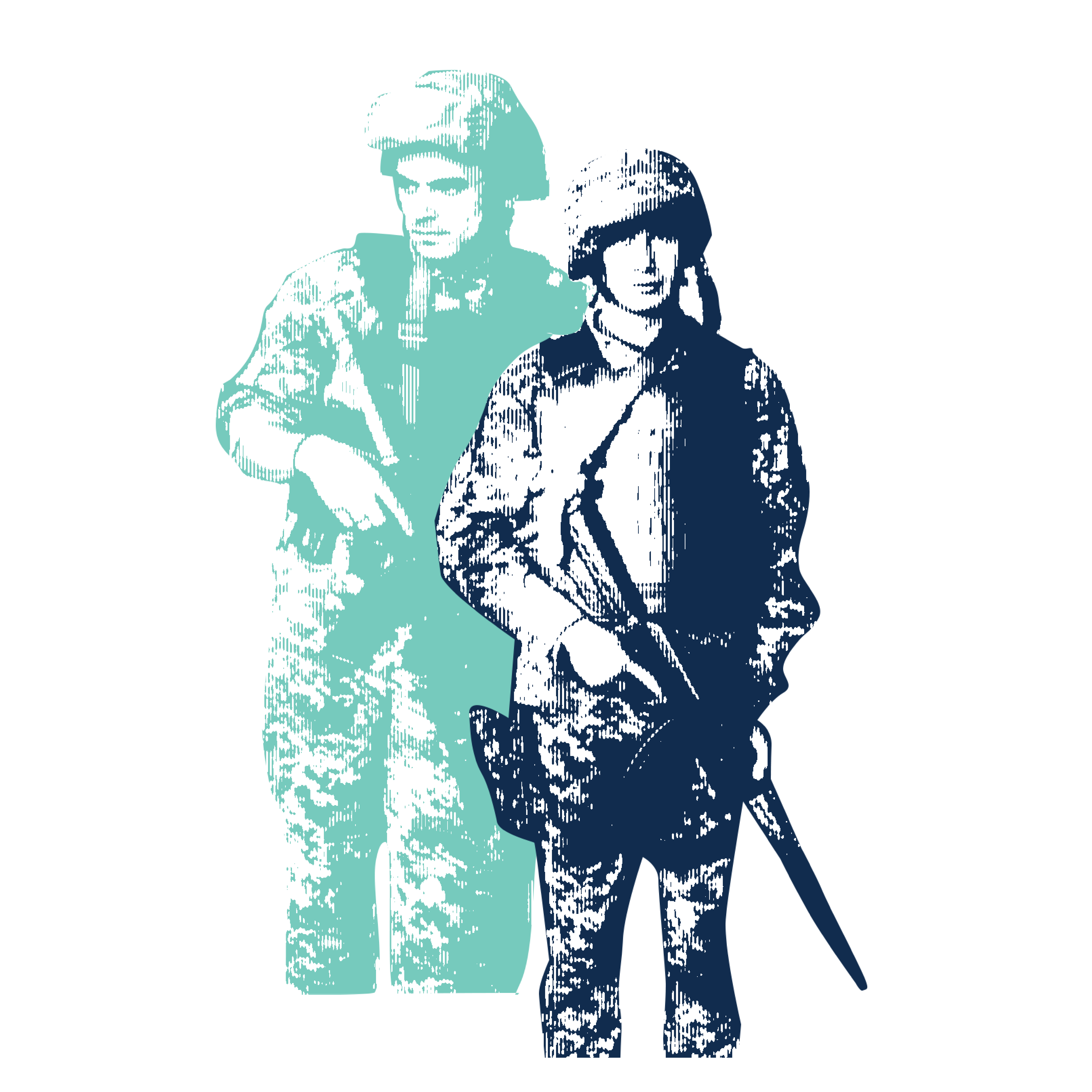
The Crime
Five men are facing charges in the United States military tribunal at Guantánamo Bay of aiding the 19 men who hijacked passenger planes and crashed them into the World Trade Center, Pentagon and a Pennsylvania field on Sept. 11, 2001.
The charges, which carry the death penalty, include conspiracy, murder in violation of the law of war and terrorism. The defendants are accused of directing or training the hijackers or helping provide them money or assistance with travel. They were captured in 2002 and 2003, held incommunicado in a secret C.I.A. prison network and transferred to Guantánamo in September 2006 for trial.
The Trial
Before the coronavirus pandemic, a judge had set Jan. 11, 2021, to start selection of the military jury that will hear the case, and estimated that the trial could last a year. Since then, the timetable has been upended by changes in personnel as well as virus-related restrictions, meaning jury selection could start, at the earliest, on Aug. 9, 2021, if a new judge and new defense lawyers can get up to speed and make up for months of lost hearings.
Although the defendants were arraigned May 5, 2012, the case is still in a pretrial phase and has experienced many delays.
The prosecution and defense have been litigating what evidence the United States government must provide defense lawyers and what laws apply at the court, which was created by President George W. Bush and subsequently overhauled by President Barack Obama and Congress.
Other issues to be decided before trial include what evidence is admissible at trial, notably F.B.I. accounts of what the five men said in interrogations at Guantánamo in 2007, months after their arrival from years in C.I.A. custody, when they were subjected to so-called “enhanced interrogation techniques.”
Defense lawyers want all evidence from the F.B.I. interrogations excluded as tainted by torture, arguing that their clients had been conditioned by that point to provide answers that would please their interrogators. Prosecutors call the 2007 questioning “clean-team” interrogations.
The Victims
A total of 2,976 people are named as victims in the charge sheet. That total does not include people who died of diseases blamed on their work at the ruins of the World Trade Center.
A liaison to the victims in the chief prosecutor’s office selects five people to observe the proceedings at Guantánamo from a pool of volunteer observers who include spouses, parents and children of those killed on 9/11 as well as designated survivors of the attacks. They are brought to the base to watch a week of hearings on the same aircraft that transports the judge, lawyers and witnesses.
More recently, people who lost family members to illnesses attributed to their work at ground zero have also been brought to Guantánamo to watch the hearings. In addition, the Pentagon operates special viewing sites in New York, Massachusetts and Maryland where people with victim status can watch the proceedings on a video feed from Guantánamo.
The Judge
In the midst of the pandemic, the chief judge for military commissions assigned Col. Stephen F. Keane of the Marine Corps to preside in the case. Colonel Keane, the fourth judge to sit on the case, was at William and Mary Law School in a Pentagon-paid program at the time of the Sept. 11 attacks.
He succeeded Col. W. Shane Cohen, who served for less than a year and abruptly left the case at the start of the pandemic by retiring from the Air Force. Before him, Col. Keith Parrella of the Marines also served for less than a year before moving on to a command job.
The first trial judge, Col. James L. Pohl of the Army, now retired, presided for the first six years.
The Defendants
Khalid Shaikh Mohammed: The ‘Planes Operation’
Khalid Shaikh Mohammed, nicknamed KSM by the F.B.I., is accused of conceiving of the “Planes Operation” that became the Sept. 11, 2001, terror attacks.
He is alleged to have proposed it to Osama bin Laden in 1996 and to have overseen the plot, including training some hijackers in Afghanistan and Pakistan. He was captured in Rawalpindi, Pakistan, on March 1, 2003, and held in a series of secret C.I.A. prisons, where he was waterboarded 183 times, kept nude, sleep deprived, had his diet manipulated and subjected to other violence.
As lead defendant, he sits in the front row of the courtroom. He is a Pakistani citizen of Baluchi descent and the only defendant in the case with children. He has eight.
Walid bin Attash: The Trainer
Walid bin Attash, known as Khallad, is accused of training two of the hijackers on hand-to-hand fighting in 1999, researching flights and timetables and testing the ability of a passenger to hide a razor knife on flights to Malaysia, Thailand and China. He was captured in Karachi, Pakistan, on April 29, 2003.
Mr. bin Attash was born in Saudi Arabia, and left at age 14 to join the jihad in Afghanistan. He lost his lower right leg fighting against the Northern Alliance in a battle that also claimed the life of an older brother of his. A younger brother, Hassan, is also held at Guantánamo, in a different prison. The two men have never been allowed to meet there.
Ramzi bin al-Shibh: Organizing a Hijacker Cell
Ramzi bin al-Shibh is accused of organizing the Hamburg, Germany, cell of Sept. 11 hijackers, researching flight schools from Germany and wiring money to Mohammed Atta and other hijackers. He is accused of acting as a go-between for the cell and Mr. Mohammed in Afghanistan, and relaying word to Al Qaeda leaders that Mr. Atta had chosen the date of Sept. 11 for the attack.
Mr. bin al-Shibh repeatedly tried, and failed, to get a United States visa to take part in the hijackings. He was the first of the five defendants to be captured, on Sept. 11, 2002, in a security services raid in Karachi, Pakistan. He was held for a time at Guantánamo when the C.I.A. had a station there as part of his four-year odyssey through the agency’s black sites. He is Yemeni.
Ammar al-Baluchi: Money Transfers to Hijackers
Ammar al-Baluchi is named in the charges as Abd al Aziz Ali. He is accused of transferring money from the United Arab Emirates, where he lived and worked at a computer technology business from 1999 to 2001, to some of the hijackers in the United States for his uncle, Mr. Mohammed. His mother and Mr. Mohammed are brother and sister.
He left Dubai at the time of the Sept. 11 attacks and was captured in Karachi, Pakistan, on April 29, 2003, with Mr. bin Attash. His lawyers say, based on what they know about his abuse in C.I.A. custody — water dousing, walling, sleep deprivation and being hung by his wrists — that the detainee named Ammar who is brutalized in the Hollywood film “Zero Dark Thirty” is based on his experience.
Mr. Baluchi was born in Kuwait and has Pakistani citizenship.
Mustafa al Hawsawi: Aiding the Hijackers
Mustafa al Hawsawi has the fewest charges against him and therefore sits furthest from the judge, at the back of the courtroom.
He is accused of helping some of the hijackers with finances and travel arrangements and frequently waives his right to be in court, his lawyers say, because he suffered rectal damage in C.I.A. custody — his lawyers call it rape — and he finds it painful to sit, even on the doughnut shaped pillow his lawyers bring to court. He is a Saudi citizen.
The Legal Teams
All the lawyers and support staff who work in court — for both the prosecution and defense teams — must be United States citizens. They must also have obtained top secret security clearances with special access to intelligence information, because the defendants were previously held in the secret C.I.A. black site program.
Prosecutors have higher level and broader clearances than defense lawyers and, in many instances, get to decide what information and evidence the defense lawyers are entitled to see in trial preparation. Because this is a national security case, the prosecutors collaborate with the C.I.A. and judge at times to redact original case evidence and provide substitutions of original information to the defense lawyers.
Prosecutors
Brigadier General Mark S. Martins of the Army has been the chief war crimes prosecutor since June 2011. He is a Rhodes Scholar who graduated first in his class at West Point and earned a Harvard law degree alongside a young Barack Obama.
General Martins served for five years in Iraq and Afghanistan and helped review detainee policies for President Obama in 2009 before he went to the Office of Military Commissions. He was scheduled to retire from the service on Nov. 1, 2017, but has twice received extensions.
General Martins assigned himself to this case. He has two lead prosecutors, both civilians: Edward R. Ryan of the Justice Department and retired Army Colonel Robert L. Swann, a Defense Department employee.
Other prosecutors on the case include the civilian lawyers Christopher M. Dysktra, Jeffrey D. Groharing, Nicole A. Tate, Clayton G. Trivett Jr. and Michael Warbel. Cmdr. Rachel Trest of the Navy, Cap. Jackson T. Hall of the Air Force and Maj. Neville F. Dastoor of the Army are also members of the prosecution team.
Defense Lawyers
The chief defense counsel is Brig. Gen. John G. Baker of the Marines. He does not actually represent any of the defendants. Instead, his role is to assign lawyers and other staff members to prisoners who are accused of war crimes, to argue for resources and manage the staff of 100 military and 50 civilian employees of the Military Commission Defense Organization. He has held the position since 2015.
For Mr. Mohammed, Gary D. Sowards of New York serves as the lead, learned counsel with Maj. Maria Delimata of the Air Force, Lt. Peter N. Berg of the Navy, David Z. Nevin, Denise “Denny” LeBoeuf, Melanie T. Partow and Rita J. Radostitz. Mr. Sowards previously represented the “Unabomber,” Theodore J. Kaczynski, as part of a capital defense team in a case that ended with Mr. Kaczynski being given a life sentence.
For Mr. bin Attash, Cheryl T. Bormann of Chicago serves as lead, learned counsel with Capt. Jay S. Peer of the Air Force, Anisha P. Gupta, William R. Montross Jr. and Edwin A. Perry. Ms. Bormann has been defending capital cases since 1994 and joined the Office of Military Commissions after Illinois abolished the death penalty in 2011.
For Mr. bin al-Shibh, James P. Harrington of Buffalo serves as interim lead, learned counsel until his successor, David I. Bruck, appears in court, with Maj. Virginia M. Bare of the Air Force, Lt. Cmdr. Rachel W. Reddick and Lt. Clayton Lawrence of the Navy, and Donna R. Cline, Wyatt A. Feeler and Vivian Hernandez.
Mr. Bruck was hired for the case in April 2020 but was unable to meet Mr. bin al-Shibh throughout the pandemic, first because of a delay in obtaining a security clearance and then later because of travel restrictions. He has advised the court that he will need 30 months to prepare for the case, once he is allowed to meet with the prisoner and evaluate the defense strategy.
For Mr. al-Baluchi, James G. Connell III of Bethesda, Md., serves as learned counsel with Maj. Ann Marie Bush of the Air Force and Benjamin R. Farley and Alka Pradhan. Mr. Connell handled the habeas corpus proceedings for 2002 D.C. Beltway sniper John Allen Muhammad, who was executed in 2009.
For Mr. Hawsawi, Walter B. Ruiz of Arlington, Va., who is a commander in the Navy Reserves but serves as a civilian, is learned counsel, with Lt. Col. Jennifer N. Williams and Maj. Joseph D. Wilkinson II of the Army and Sean M. Gleason and Suzanne M. Lachelier. Mr. Ruiz has defended death-penalty cases in both federal and state court in Florida as a public defender.
Military Commissions
The military commissions, created by Congress in 2006 and reformed in 2009, are a hybrid of the military court-martial and federal criminal court systems.
The judge and jury, called a panel, are members of the United States military. While both the prosecution and defense teams are required to have military lawyers on their teams, civilian lawyers have for years carried much of the load. Security is handled by soldiers who are assigned to the prison and work both inside and outside the court in battle dress uniforms.
The men are being tried in a cavernous courtroom at Guantánamo’s Expeditionary Legal Complex that was built specifically to try the Sept. 11 conspiracy case. It has the capacity to try six men at a time, although five are charged in the case.
Spectators watch the proceedings from behind triple-pane glass in a gallery behind the court and hear the court proceedings on a 40-second delay — long enough for the judge’s security officer to mute the audio if somebody says something classified. No photography is allowed. Sketching is permitted, with restrictions.
The Jury
A jury of 12 military officers with perhaps as many alternates is to be drawn from a pool of active-duty military officers from any or all of the four services — the Army, Navy, Air Force and Marine Corps.
The Pentagon overseer of the military commissions, called the Convening Authority, will create the pool from those “best qualified for the duty by reason of age, education, training, experience, length of service, and judicial temperament,” according to the Manual for Military Commissions.
One plan is to assemble the would-be panelists in groups of 150 in either Florida or near Washington, D.C., and send them to Guantánamo in batches for selection and elimination because the small base in southeast Cuba doesn’t have space to house and manage the entire pool at one time.
Before leaving the case, Colonel Cohen asked the prosecutors to explain how the jury panel will be sequestered at Guantánamo. The base has 6,000 residents, seven dining rooms, four fast-food restaurants, and a combined coffee shop and ice cream parlor.




